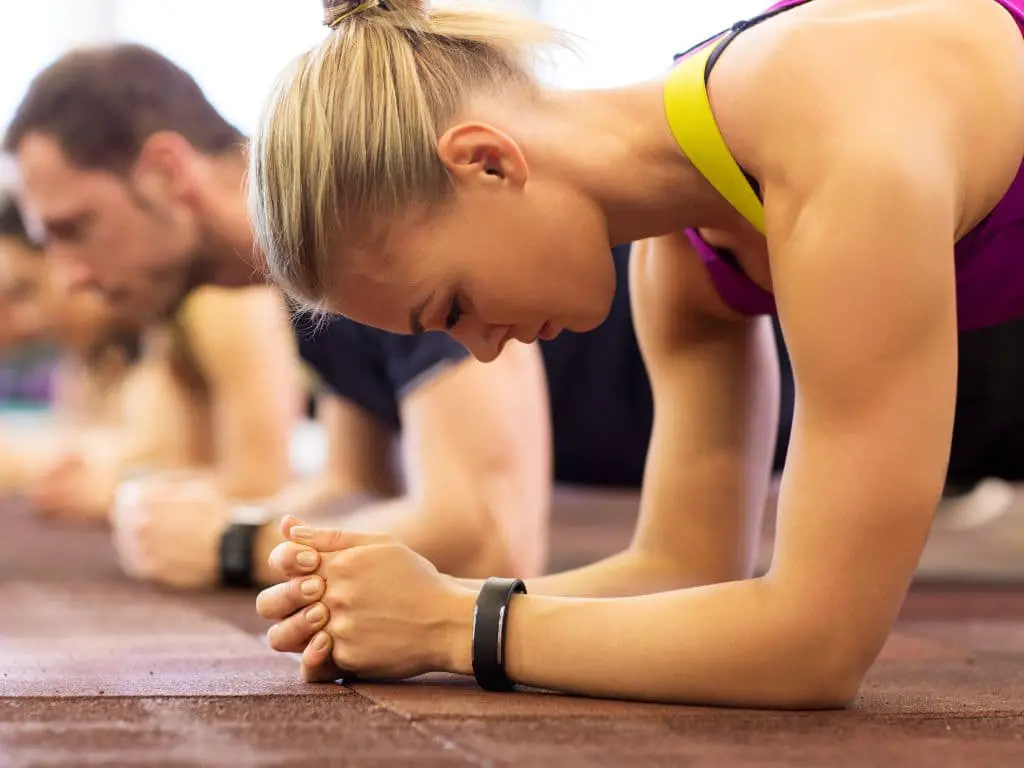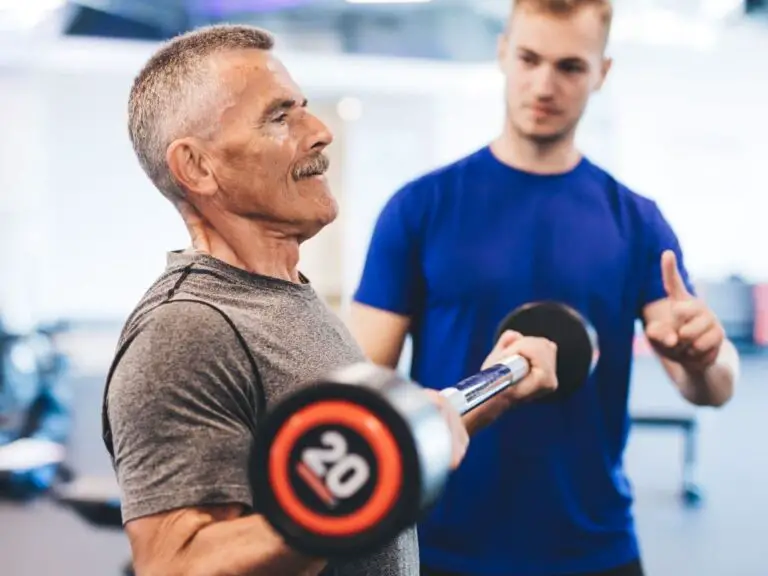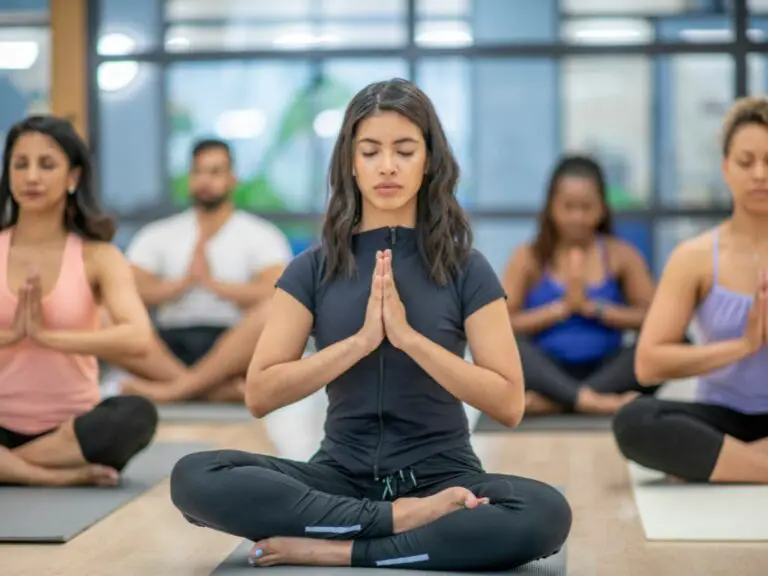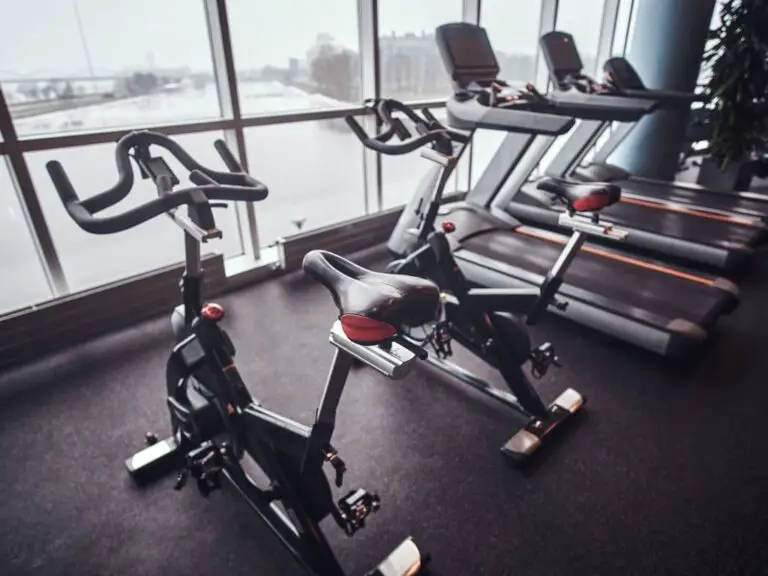How Long Does It Take for Planks to Show Results?
The plank exercise has become one of the most popular core strength and stability moves. Planks help build a strong foundation by strengthening the muscles in your abdomen, back and shoulders. Unlike crunches which isolate your abdominal muscles, planks require your entire body to work together as a single unit. This helps improve your posture and balance while protecting your spine.
For most people who are new to planking, holding the pose for just 30 seconds can be challenging. But like any exercise, planks become easier the more you practice them. So how long does it actually take to see noticeable results?
Planks can show results in a matter of weeks, increasing core stability and strength. However, for visible abdominal definition and waistline reduction, steady planking 3-4 times per week may take 2-3 months. To achieve a dramatic transformation, consistent planking over a 6-12 month period is required, alongside a comprehensive approach to diet and exercise.
Generally, staying consistent with planks 3-4 times per week will lead to a stronger core and greater muscle endurance over time.

Let’s take a closer look at the many benefits of planking and how long you need to hold a plank to build core strength and definition.
How Long Does It Take for Planks to Show Results?
How quickly you see planking results depends on your starting fitness level and consistency following an effective plank regimen. Most people notice an improvement in core stability within a few weeks of starting a plank routine.
But visible differences in abdominal definition and waistline reduction may take 2-3 months of steady planking 3-4 times per week to notice. Dramatic before and after plank transformation photos you see online take consistent planking over a 6-12 month period.
Some factors that influence planking results include:
- Consistency – Plank 4 times a week for faster gains rather than 1-2x per week
- Intensity – Hold proper planks for 60-90+ seconds for best results
- Progression – Increase plank time and try advanced variations
- Body fat % – Low body fat is key for 6-pack abs to show
- Full-body training – Compound lifts plus cardio aid fat loss
- Diet – Clean eating supports lean muscle growth
While planks strengthen the abdominal muscles, you still have to reduce overall body fat to achieve a visible six-pack. That takes time, hard work and a comprehensive approach to fitness and nutrition.
What are the Benefits of Planking?
There are many excellent reasons to add planks to your fitness routine including:
- Improved posture – Planks strengthen muscles in your shoulders, chest and upper back which helps you stand taller and prevent slouching. Good posture also reduces neck and back pain.
- Total body toning – Holding a plank requires your arms, legs, butt and abs to contract which tones and strengthens all of these muscle groups. Unlike isolating exercises, planks fire up multiple muscle groups at once.
- Abdominal muscle definition – Planks are especially effective at tightening, firming and flattening the entire abdominal area. When done regularly, planks can help sculpt a slimmer waistline.
- Core stability – Planks target your transverse abdominis, the deep muscle that wraps around your spine and internal organs. Activating this muscle creates stability in your core and provides a strong foundation for all movements.
- Functional fitness – Having a solid core makes everyday activities like carrying groceries or picking up a toddler much easier. Planks mimic movements and positions your body uses in real life.
- Injury prevention – A stable core protects your lower back by evenly distributing stress and strain placed on your body’s kinetic chain. Strong abs and back muscles keep your spine aligned and also prevent strains.
- Movement efficiency – With greater core activation and stability, your body has an easier time performing compound exercises that require balance and coordination like squats, deadlifts and presses.
In short, planks are one of the most efficient ways to build functional strength and improve overall fitness. Holding this challenging pose just a few times a week provides full-body benefits.
What are the Different Types of Planks?
While the standard plank on your forearms is the most common, there are many plank variations that target different muscle groups. Some plank options for beginners as well as advanced exercisers include:
- Low plank – Performed on your forearms and toes, this basic plank pose works your deep core muscles. Keep your back flat, abs engaged and hold for 10-60 seconds.
- High plank – The high plank puts more emphasis on your shoulders, arms and chest by supporting your body’s weight on your hands and toes. Squeeze your glutes and hold for 10-60 seconds.
- Side plank – Works your obliques by balancing on one forearm and the side of your foot. Keep your body in a straight line and hold for 10-30 seconds then switch sides.
- Plank jacks – Step your feet in and out while maintaining a plank position. Works your coordination as well as your core. Do 10-15 reps.
- Plank with shoulder tap – Staying in plank, lift one hand and tap your shoulder then switch sides. Works obliques, shoulders and stability. Do 5-10 taps per side.
- Plank up down dog – From a high plank, push back into downward dog, pause, then reverse back into plank. Repeat 5-10 times.
Adding these creative variations keeps your core workouts challenging and provides a total-body plank burn.
What is the Correct Form for Planking?
To reap all the benefits of planking, proper form is critical. Here are some tips to ensure you have the right plank posture:
- Keep your back flat – No sagging or arching in your spine. Engage your core to keep your back straight from shoulders to heels.
- Neutral head – Your head should be in line with your back. Don’t look up or let your head hang.
- Tighten your abs – Draw your navel towards your spine and keep your abdominal muscles contracted.
- Squeeze your glutes – Firing your butt muscles keeps your hips steady and aligned. Prevent your rear from sticking up.
- Feet together – Start with your feet touching for better stability as your build strength. Shoulder width apart is ideal.
- Distribute weight evenly – Don’t sink into your shoulders. Press evenly through both arms and distribute body weight between forearms.
- Keep hips square and steady – Resist rotating your hips side to side or moving them up and down.
The best way to perfect your form is to record yourself planking from various angles to spot any deviations, tilt or misalignments in your technique. Performing planks on an exercise mat can also help maintain proper posture.
How Long Should I Hold a Plank?
When you first start planking, holding the pose for just 10-30 seconds with proper form provides an excellent core challenge. Work up to holding a plank for 60 seconds, then gradually increase your planking time in small increments from there.
In most fitness programs and plank challenges, working up to holding a plank for 60 seconds is the initial goal. But many experts recommend building endurance to hold a plank exercise for as long as 2-5 minutes for best results.
Longer planks build greater core stability and strength. But always focus on maintaining perfect posture rather than how long you can endure an improper plank with rounded shoulders or a sagging back. Stop once your form fails.
If you’re new to planking, follow this general guideline for progression:
- Weeks 1-2: Hold a proper plank for 10-30 seconds, 1-2 sets
- Weeks 3-4: Work up to a 60 second plank, 1-2 sets
- Weeks 5-6: Advance to 75-90 second planks, 2-3 sets
- Weeks 6-8: Build to 2-3 minute planks, 2-3 sets
Increase planking time slowly while scaling back if you experience any pain. Variety is also key – rotate between low, high and side planks.
How Often Should I Do Planks?
Most experts recommend incorporating planks into your routine 2-3 days per week on non-consecutive days. Allow your core at least 24-48 hours to recover between planking sessions.
Planks can be done as part of full body strength workouts or as a standalone core exercise routine a few times a week. The best way to do a plank exerciseis to start with 1-2 sets, focus on perfect form and gradually increase your planking time and sets.
Ideally build up to holding 60-90 second planks for 2-3 sets, 2-3 days per week. Mix up low, high and side planks to continually challenge your core. You can maintain strength with just two plank workouts a week, but more frequent planking will lead to greater endurance and muscle development.
For accelerated results, some plank challenges have you hold planks 7 days per week while varying duration week to week. But for most people, planking every other day allows your body to recover properly between training sessions. Listen to your body.
How Can I Make Planking More Challenging?
As your core strength improves, there are many ways to continue advancing and intensifying your planking routine. Some techniques for making planks more challenging include:
- Increase plank time in small increments
- Add sets and build volume
- Reduce rest time between plank sets
- Try more dynamic variations like plank jacks or walk-outs
- Use unstable surfaces like a BOSU ball or balance trainer
- Lift one leg or arm while planking
- Add resistance bands above and below the plank position
- Combine planks with push-ups, crunches or squat jumps
- Move from two forearm planks to one hand/one forearm planks
Continually testing your limits with new plank progressions ensures you get a deep core burn every workout. Just don’t sacrifice form for duration.
What are the Long-Term Effects of Planking?
Consistently practicing planks over time elicits a number of positive effects including:
- Improved stability and efficiency of movement
- Enhanced athletic performance and decreased injury risk
- A strong foundation for weightlifting and strength training
- Decreased risk of back pain and better spinal support
- Improved posture and muscle memory when standing or sitting tall
- A toned and tightened core with increased muscle definition
- Greater core, back and shoulder strength
- A greater ability to stabilize the body during everyday tasks and activities
Regular planking essentially “trains” your body to use your core more effectively in every plane of motion. The long-term payoff is better overall fitness, improved functional strength, and perhaps most noticeably, visibly toned abdominals and obliques.
What Not to Do When Doing a Plank Exercise?
To maximize the effectiveness and safety of planking, beware of these common mistakes people make with their planking technique:
- Allowing hips to sag or lift up
- Rounding upper back and shoulders
- Looking up and straining neck
- Holding breath or exhaling forcefully
- Tensing shoulders and arms
- Allowing elbows to flare out
- Lifting one leg higher than hip
- Placing hands too close or far apart
- Moving/shifting hips side to side
- Attempting excessive plank times
Focus on smooth breathing, maintaining alignment and using your deep core – not just arms and legs – to hold a steady plank position. Don’t overdo plank duration at the expense of proper form. Mastering solid plank technique provides the most benefits.
So remain patient and plank consistently 3-4 days per week. Listen to your body, focus on continual improvement and in time you’ll achieve impressive planking results – a stronger core, better posture and increased functional fitness for life.
Are Planks Better Than Sit-Ups?
Planks and sit-ups are both effective exercises for core strengthening, but they target different muscles and offer distinct benefits.
Planks are considered superior for building overall core strength, promoting good posture, enhancing functional fitness, and ensuring back health. They engage multiple core muscles simultaneously, improving stability and endurance.
Sit-ups primarily target the rectus abdominis muscle, contributing to the development of visible six-pack abs. However, they can potentially strain the back if performed incorrectly.
Planks also prove more time-efficient as they can rapidly fatigue the core muscles within a shorter timeframe compared to sit-ups. Despite their individual advantages, incorporating both exercises into a workout routine can provide comprehensive core fitness gains.
Frequently Asked Questions
-
Can I get a six-pack from just sit-ups?
You can’t get six packs by doing 500 situps per week. Instead, your focus should be on losing body fat.
-
What is the single best exercise for lower back pain?
Back pain can be reduced by walking, swimming and bicycling. You can start with small sessions, and increase your intensity over time. Swimming is a great way to strengthen your back, especially if you are experiencing pain in your lower back. Do not twist or do any other strokes.
-
Are planks OK for seniors?
Plank is the best exercise for seniors. The plank is a way to get your abs in order. Place your elbows, knees, and head on the ground. Keep your upper body up. For 30 to 60 seconds, form a plank together with your body. Hold for up to one minute.
-
Are planks a waste of time?
These are more efficient at strengthening the core and place less strain on the spine. This makes them safer. Holding a Plank for more than two minutes is a waste. You have enough endurance if you are able to hold a Plank for 120 seconds.
-
How long does it take for planks to show results?
PLOS ONE 2019 study on college-aged endurance runners found core training to be beneficial in improving balance and endurance. Other studies also found that core strength was an important factor in the reduction of chronic back pain.
-
How do I know if my core is getting stronger?
Your core will be strong if your back is straight. Try again if you have to bend your back to lift your body upwards. Keep your thumbs aligned with your chin. This position is ideal for your core.
-
Are planks better than push-ups?
For building muscle, burning calories and improving cardiovascular health, push-ups work better than planks. Push-ups are a great way to work your arms, chest and shoulders harder than planks.
-
Should planks be done everyday?
You can have a better day by doing only planks each day. Planks require you to engage all of your muscles, including the neck, arms, shoulders and neck. Supporting your body weight is a major part of your arms and shoulders.
-
Is it good to do planks before bed?
A plank can be done before you go to bed, and it is low-impact. Planks engage your core and support muscles but have little impact on heart rate.
-
Is it OK to do core exercises every day?
Your abs should be trained every day. Just as any muscle needs a rest, so do your abs! You don’t have to activate your abdominal muscles in your warm up with Inchworms, Planks, or other balance and stabilization exercise, but they shouldn’t be trained every day.
-
Are 2 minute planks good?
Stuart McGill, a spine specialist who has been recognized worldwide for his work in core development and spine biomechanics, recommends that you aim to complete the abdominal plank at your elbows within two minutes (1).
-
Why do I shake so much when I do a plank?
It is normal to shake or quiver during planks. It’s normal to push the muscle contractile limits, and challenge its endurance, says David Jou, PT., DPT. He is co-founder at Motivny, New York City. According to Dr. Jou, shaking while doing other exercises is the same.
-
Is planking better than sit ups?
Once, sit-ups were the best way to get tighter abs. “Planks” are merely flooring. Planks, which require you to assume a certain position and then hold that position, have become the standard in core training. Crunches and sit-ups are no longer popular.
-
Do planks flatten stomach?
Planks are one of the most effective exercises to tone your stomach. They work all muscles, from the transverse abdominus to the internal and exterior obliques to the hips and back.
-
How long should I hold a plank?
What is the maximum length you should hold a plank for? Although the world record time for holding a plank was more than 4 hours, it is not necessary to do so. Experts suggest that you should only do the plank for 10 to 30 seconds. L’Italien suggests that you focus on multiple tasks in a shorter time.







